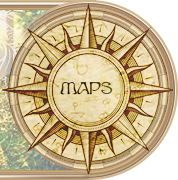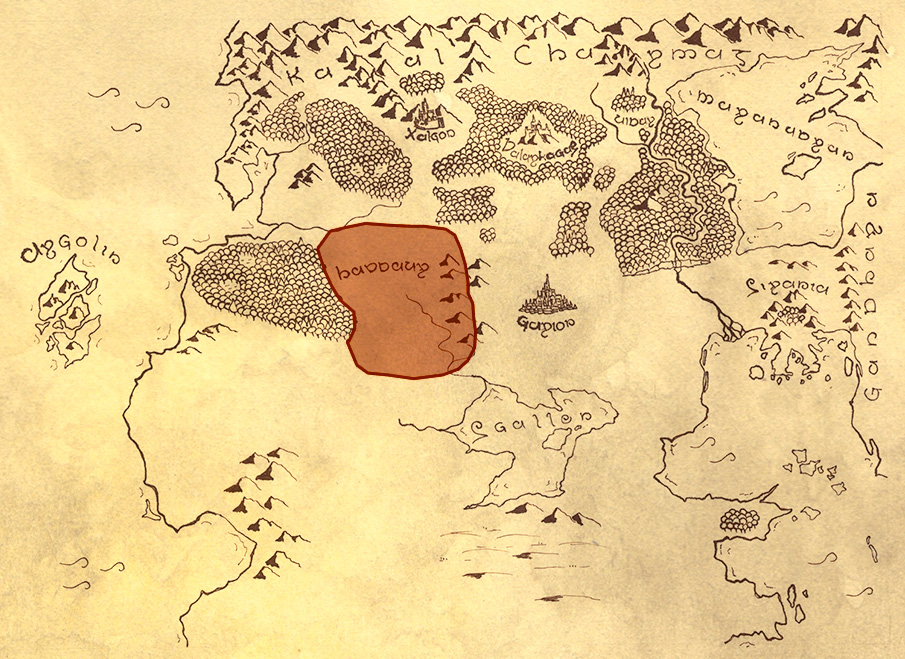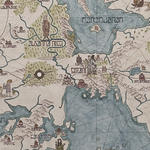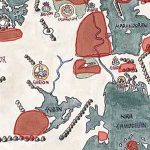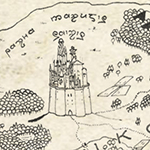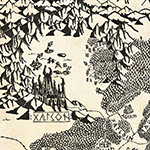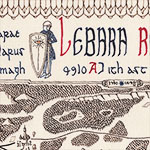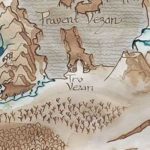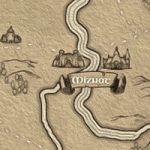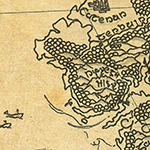Next to Sirania and Garion, the Havdurian Empire belongs to the three great realms of Western Grand. It is a country powerful mainly through its wealth and developed trade. One of Havdur’s peculiarities is the fact it does not limit its trading activities to Grand only; the empire does business in the lands of living as well as those of the dead.
Biopole a Nekropole
All cities in Havdaur are divided into two halves, the border being marked by flowing water. The Biopolis, or the city of the living, is always situated to the east side of the river, while the Necropolis, the seat of the dead, is found on the western bank. In ancient times, Havdaur was a place of great piety that resulted in something the Havdaurians call the Gift of Return. Shortly after the burial, the local deceased once more come to life and lead their otherworldly existences in their family tomb in Necropolis.
There is a lively exchange between the Biopolis and the Necropolis – on certain holidays, the living and the dead visit each other directly in their homes, but even during the year, they will meet on bridges across the river to exchange words and gifts. The dead have access to much knowledge and power as well as to many treasures of the underworld; these they are willing to pass to the living, who in exchange tend to the afterlife existence of their deceased brethren through rituals, offerings, and commemorating their names and deeds.
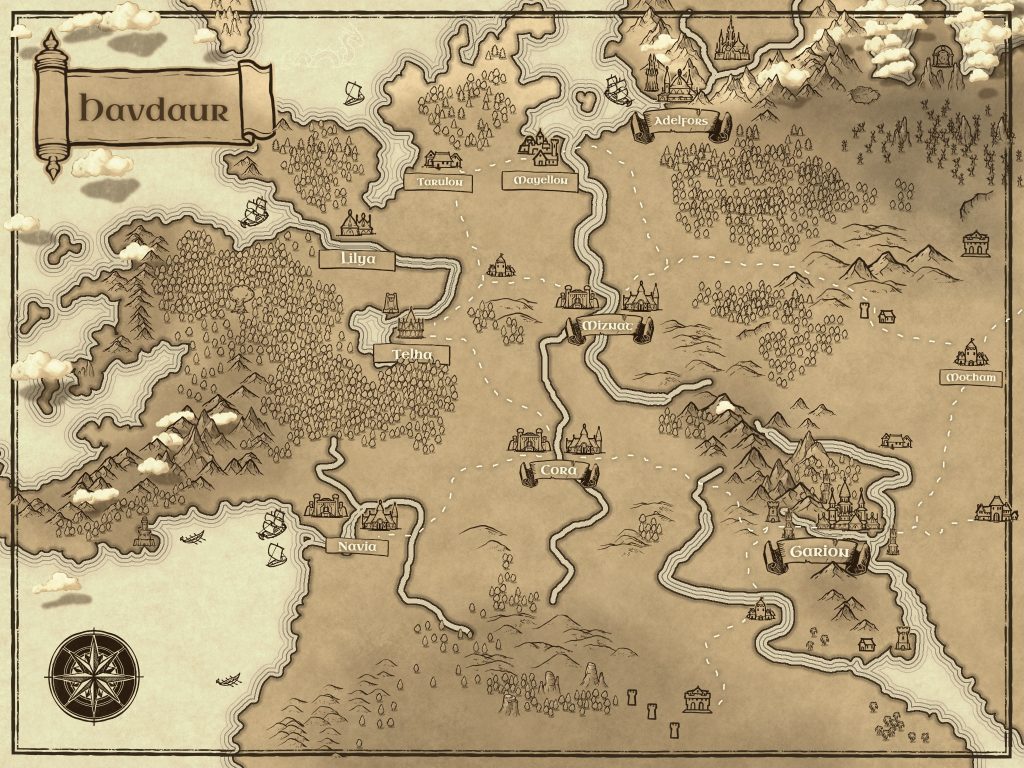
Cycle of the Underworld and Types of the Deceased
Every deceased Havdurian with a willing and wealthy-enough family is given a funeral. The type of burial may differ depending on the family tradition and wealth – some deceased undergo a complex embalmment procedure and are clad in kingly apparel, while others are simply washed and wrapped in a shroud. At the end of the funeral, the deceased is placed on a boat and sailed to the other side, the Necropolis. If the funeral was performed correctly, after three days, the deceased will wake into their otherworldly existence. Those who belonged to great or famous houses become the higher-ranking undead and continue with their un-life over the long mortal generations to come, potentially infinitely, while the less important among the deceased join the common folk of the Necropolis, usually growing weak over the course of one or two generations until disappearing entirely – more or less as fast or slow as does their memory among those still living in the Biopolis.
Famous bards whose songs are still sung and renowned generals with statues and victory arcs erected for them in the Biopolis are among the high-ranking inhabitants of the Necropolis and act as its rulers. Therefore, the City of the Dead is not free from social hierarchy and certain power strife, although it is not a mirror image of the situation in the Biopolis. For example, if a painter from a poor family receives a decent funeral and his works suddenly gain posthumous popularity, he can eventually end up with more power in the Necropolis than a wealthy-born person who was disliked by all and so shortly after his death there is no-one to bring him offerings. Every undead is also accorded specific abilities and limitation depending on his family or personal characteristics – some cannot enter the daylight, some gain power from the light of the moon, others are allergic to metal or silver, some can turn themselves into animals or have a ghost-like appearance, others still are endowed with mind-reading skills, they see blood flowing in the living beings, some can change their face or voice, others can travel through dreams of the living and so on and so forth.
Power of the undead
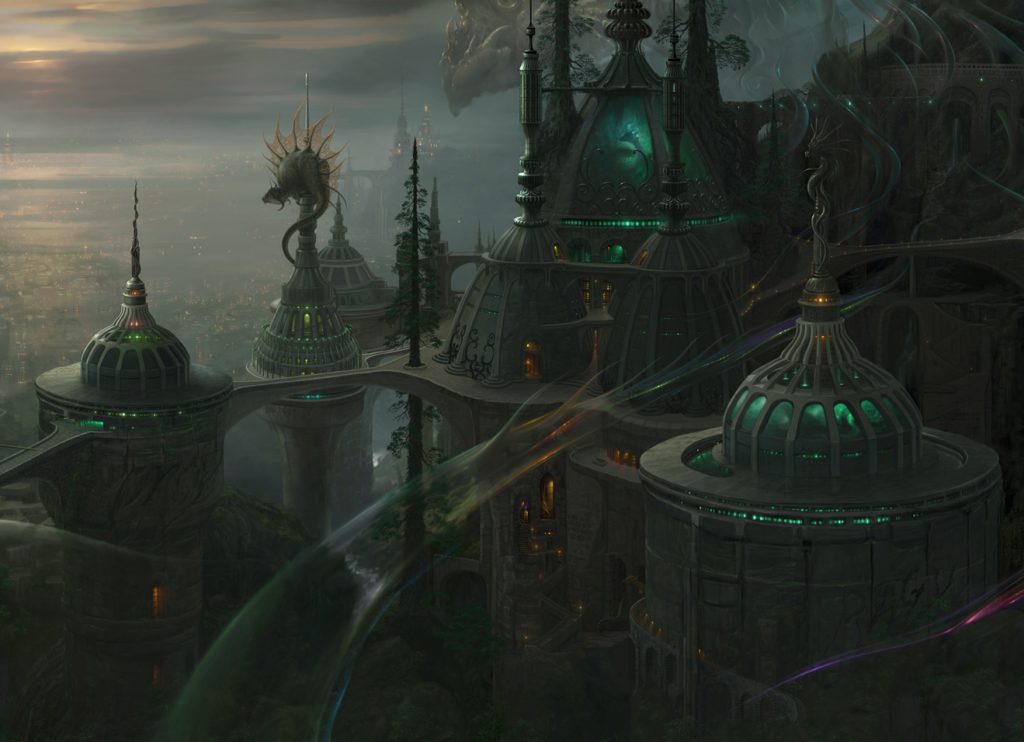
On the one hand, the magical power of the undead, as well as the number of their followers in the Necropolis, is dictated by their fame gained in life; on the other hand, it is subject to the power and loyalty of their families. Some inhabitants of the Necropolis can see the fate, others have the power to influence weather or harvest, others still are simply powerful magicians disposing of a large variety of spells from a range of schools equivalent to or different from those available to the living. Although tied to their family tombs with a strong magic bond, some of them can not only temporarily leave the Necropolis, their home, but also venture on longer expeditions into the outer world. In this case, they are bound by certain rules; not every undead is capable of such a journey, but it is not impossible.
Some of the undead who were ambivalent already during their lives will (in spite of attempts to prevent this through rituals performed at their funeral) come back to the Biopolis to do harm – either through actions typical of ghosts or vampires or by simply excessively interfering with the life in the Biopolis through magical or manipulative rituals. If they are caught, the authorities can punish them by forbidding their families from continuing the commemorative rituals in their names, thus stripping them of strength. In general, a part of the power of the undead is partly (though by no means entirely) derived from ritual veneration of the living, and reciprocally, the wealth and success of the living are in part dependent of the support “from the other shore”. It is precisely by this ancestral support comprised of advice, trading opportunities and magic powers Havdaur is at an advantage against other countries, and the help of the undead is duly appreciated.
Depths of the Necropolis
The undead ancestors do not simply sit in their Necropoles as the day is long, waiting for an opportunity to communicate with the living. They lead an active existence. In part, it is similar to what they did when they were alive – meetings, political negotiations, family discussions, trading opportunities and so on – but in some aspects, it is vastly different. The undead have different needs than the living. For example, they do not eat food grown in fields but instead feed on offerings they receive from the other shore; usually, very little will sustain them for a long time. Some Necropolitan saboteurs also feed on human or animal blood, or on tree sap, but this is considered a breach of the agreement with the Biopolis (see below). Moreover, the Necropolis is a place of contact with the underworld dimensions. Through a network of wells and underground tunnels, all Necropolises lead into words outside of Grand; this is where a part of their magic powers come from, as well as treasures and riches they bring to the living as a recompense for their respect and offerings.
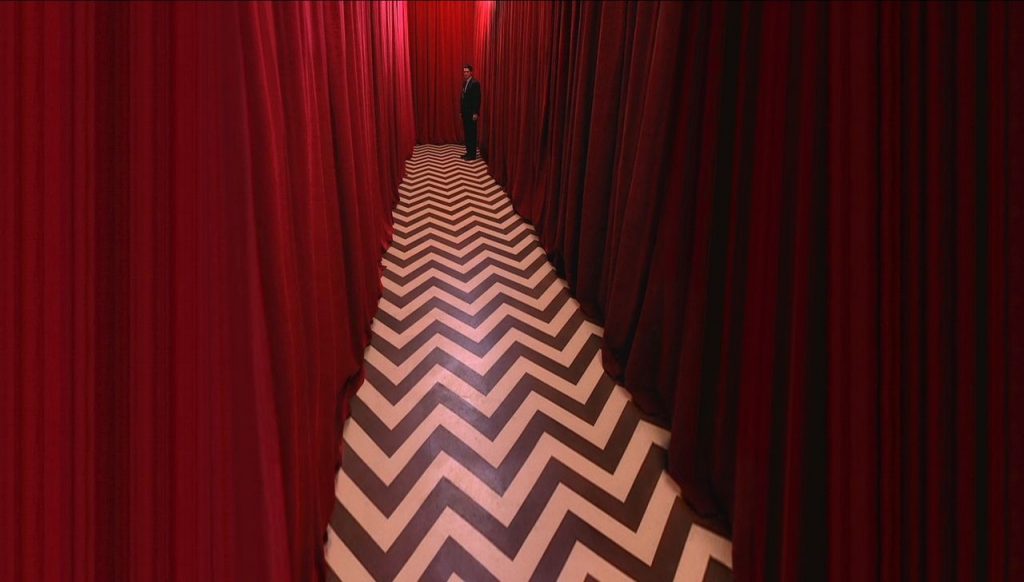
Necropolises are peculiar places that most living visitors naturally find strange and oppressive, though not necessarily evil or hostile. The space in a Necropolis does not always adhere to the common logic of space as we know it from the world of the living; there are seemingly straight streets that nonetheless bite their own tail, strange theatres with cyclic time and so forth. For some reason, the inhabitants of Necropolises are fond of heavy red curtains, which are used as an almost universal decorative feature.
Crossing the bridges
The basic agreement between the Biopolis and the Necropolis lies in the following: except for special cases of precisely fixed rituals and holidays, the living and the undead leave each other alone. To cross a bridge from either side without the ritual framework is forbidden. Unrestricted movement of the undead across the bridges as well as their unchecked existence in the world of the living would cause chaos. Most of the time, they are much more powerful than the living, and their magic would allow them to deceive or manipulate people according to their will. Also, many undead do not possess the regular human psyche; to the eyes of the living, their interests often seem perverted, and they like things that are strange or downright mad. On the other hand, the living strolling freely in the Necropolis without the protection of a ritual are also asking for trouble. The undead are naturally drawn to the living; they literary crave to bathe in the warmth and light of their life. An unprotected living person would probably experience a great deal of harassment in the Necropolis; his life would be in danger and eventually, he would most likely end up with a host of undead admirers crawling at his feet and fighting for his favour, or in a cupboard of some undead who would then come and gloat over him like a rich man over his chest of gold.
Therefore, the tradition of periodical holidays was established – every day, small offerings are brought for the decease onto the bridge; once a week there is a “bridge-day ” when under the protection of a festive day, the living meet with the undead on the bridges and do trade. Once in a month, there is a bigger holiday, but the largest festivities take place four times a year.
Four great holidays
One day at the height of spring is dedicated to the visit of the living in the Necropolis – at that time, they come as guests, always relatives visiting relatives; the undead ancestor take care of them and have them under their protection. It is said that before the visit of the living, they hastily put away all the terrifying, dark and perverse jumble, temporarily decorating their family tombs in bright colours so that the living would feel at home.
On the other hand, at the height of the autumn, one day is dedicated to the visit of the undead in the Biopolis. Because the undead are a slightly bigger threat to the living than the other way round, the Biopolis prepare for this mass visit with the help of a large variety of complex family and public rituals to ensure the city as well as the lives of its inhabitants are secured by magic. The undead visit the homes of their descendants where they are well-received and entertained; this family feast is the greatest physical pleasure they enjoy over the course of the year and nothing makes them feel as good as a hearty meal in the house of their family. Sometimes, early in the morning on the next day, there is trouble with groups of the life-drunk undead, whose families could not keep up with them in their late-night merrymaking; these drunken bands then wander the streets in a somewhat impudent manner, causing disorder and trying to meet with the living. Fortunately, the city is protected throughout the holiday and the undead cannot really kill anyone; most of the time they can hardly do more than disrupt the quite hours and occasionally scare someone. Over the time, this activity, too, had evolved into a custom, and once a year, some of the young and fearless Biopolitans set forth with the undead (who are not their relatives and would, therefore, be extremely dangerous for them on any other day) to enjoy a wild night tour.
Apart from these two holidays, there are two other festive days related to the middle of winter and of summer, when for one day and night, it is allowed to cross the bridges in both directions. In both cases, family visits take place across the abyss of Death, but especially the summer holiday has a reputation of a feast that is more individual and less connected with the family. For instance, there are known cases of living and undead individuals from a completely different houses, who have fallen in love with one other, and this is the only day in the year when they can legally meet. There is a famous story of a young poet who while visiting a certain palace fell madly in love with a portrait of a long-dead beauty; on the next holiday, he searched the lady out in the Necropolis, and having read her the odes he had composed in the celebration of her beauty, she eventually reciprocated his affection. It is true, however, he returned home the next day robbed of two pints of blood, while the Necropolitan beauty had become visibly younger and her cheeks boasted a satisfied rosy hue for many weeks to come.
